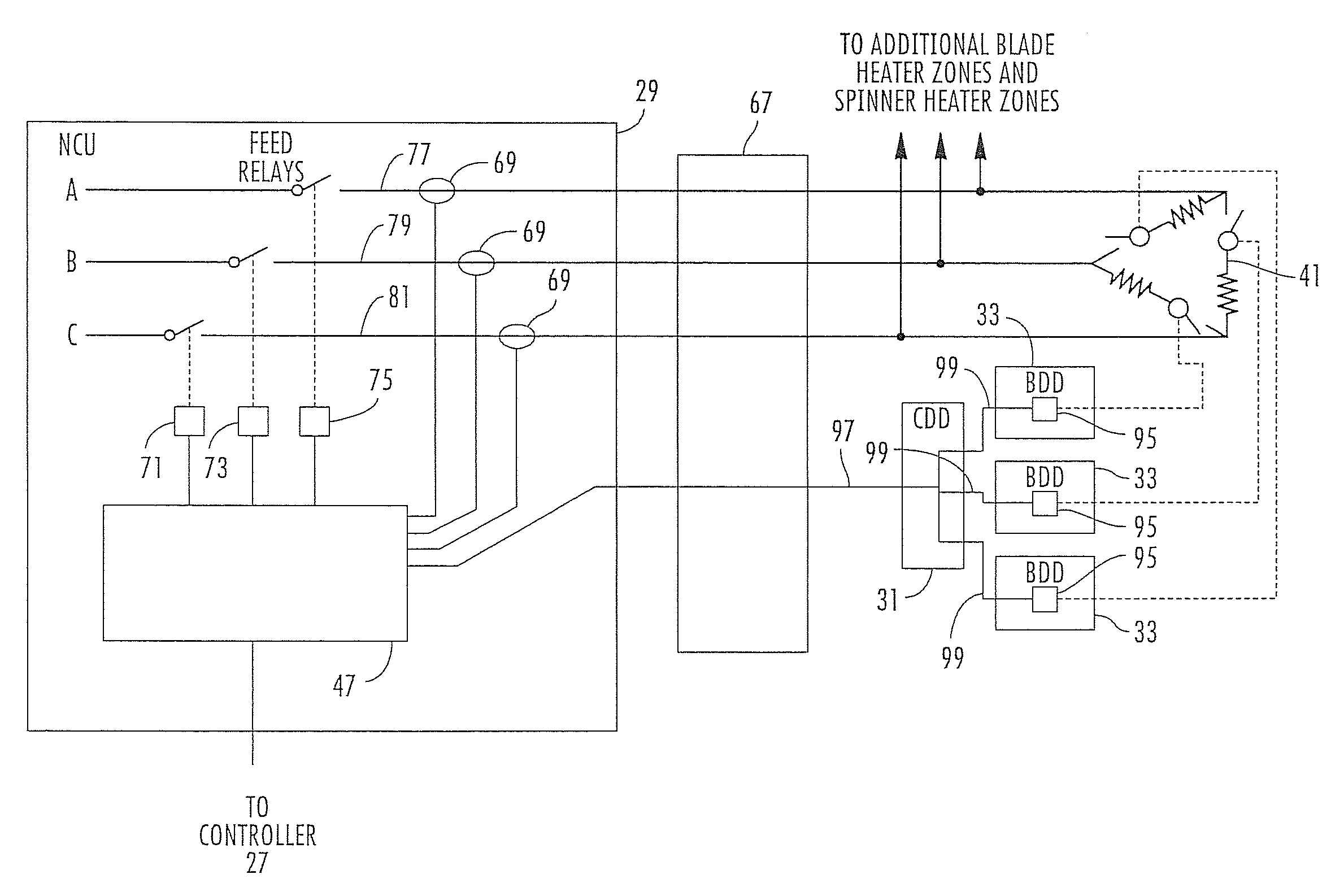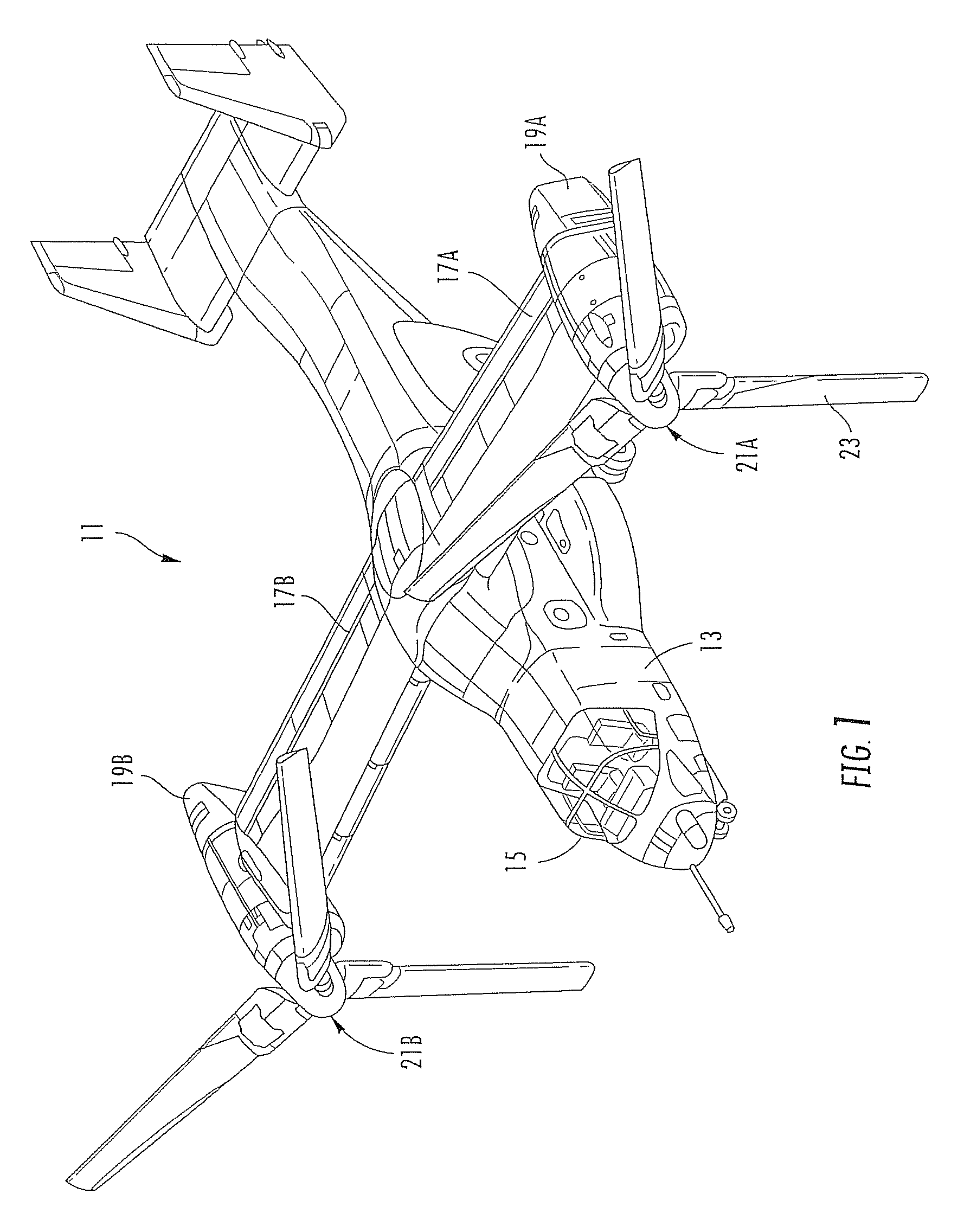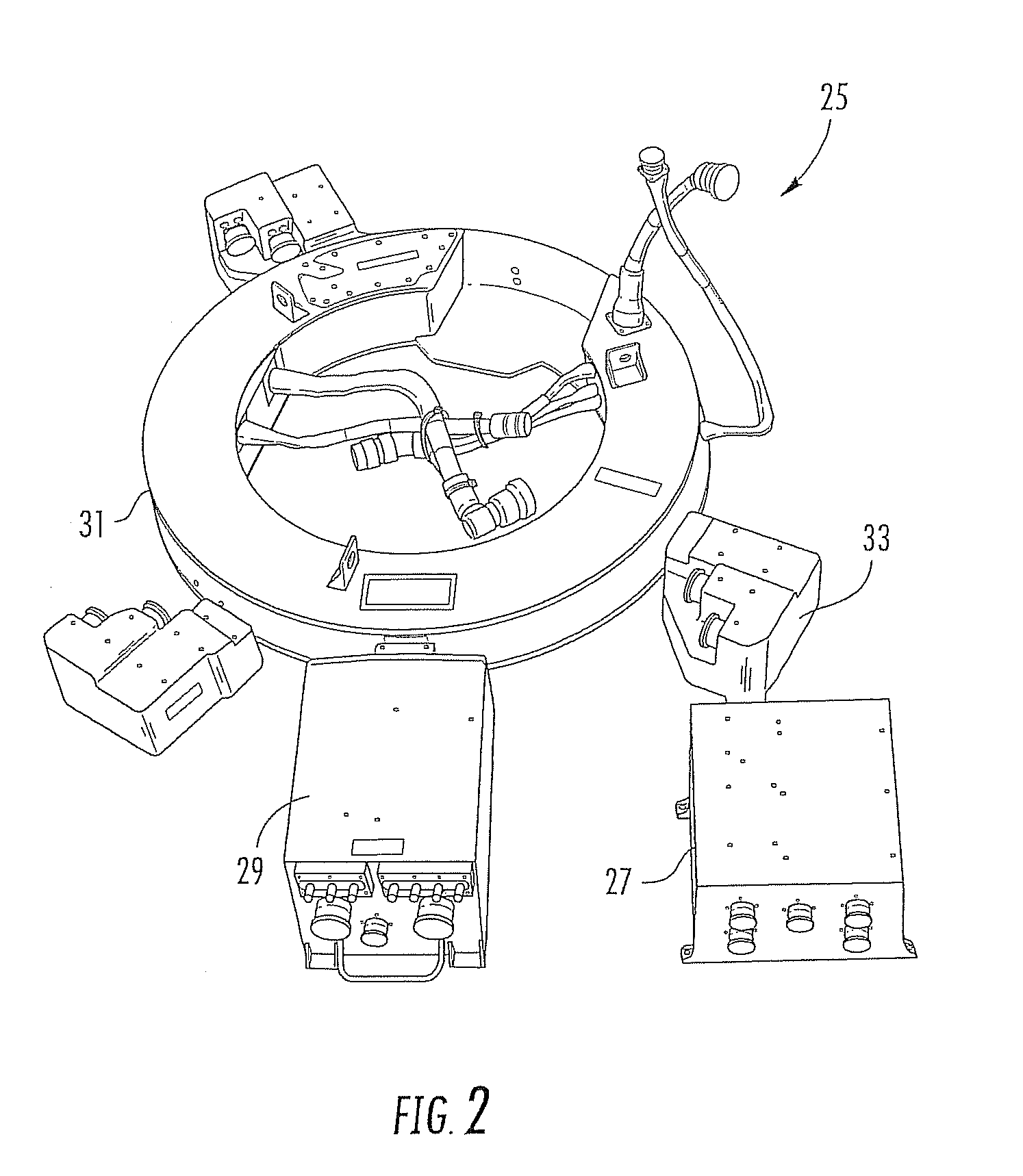Ice management system for tiltrotor aircraft
a technology of tiltrotor aircraft and management system, which is applied in the direction of vertical landing/taking-off aircraft, vehicles, de-icing equipment, etc., can solve the problems of significant impact on the ability of tiltrotors, reduced lift efficiency of props, and damage to fuselages, so as to improve performance and reliability
- Summary
- Abstract
- Description
- Claims
- Application Information
AI Technical Summary
Benefits of technology
Problems solved by technology
Method used
Image
Examples
Embodiment Construction
[0019]The present invention is an ice management system for prop-rotors of tiltrotor aircraft that is effective, reliable, rugged, and lightweight, and which has a relatively low cost. Reliability is a key requirement for an ice management system on a tiltrotor to avoid dangerous ice accumulation on the prop-rotor blades and the corresponding loss of lift.
[0020]A combination of electro-thermal prop-rotor de-ice zones and leading edge parting strip anti-ice zones achieve the required control of prop-rotor ice shedding while minimizing the size and weight of shed ice. The system consists of multiple electro-thermal heating elements on each blade of each prop-rotor, control relays carried by the prop-rotors, feed relays carried remote from the prop-rotors, and a controller for controlling operation of the control relays and feed relays. The system uses solid-state relays for at least the control relays, and solid-state relays are preferably also used for the feed relays. At least two r...
PUM
 Login to View More
Login to View More Abstract
Description
Claims
Application Information
 Login to View More
Login to View More - R&D
- Intellectual Property
- Life Sciences
- Materials
- Tech Scout
- Unparalleled Data Quality
- Higher Quality Content
- 60% Fewer Hallucinations
Browse by: Latest US Patents, China's latest patents, Technical Efficacy Thesaurus, Application Domain, Technology Topic, Popular Technical Reports.
© 2025 PatSnap. All rights reserved.Legal|Privacy policy|Modern Slavery Act Transparency Statement|Sitemap|About US| Contact US: help@patsnap.com



